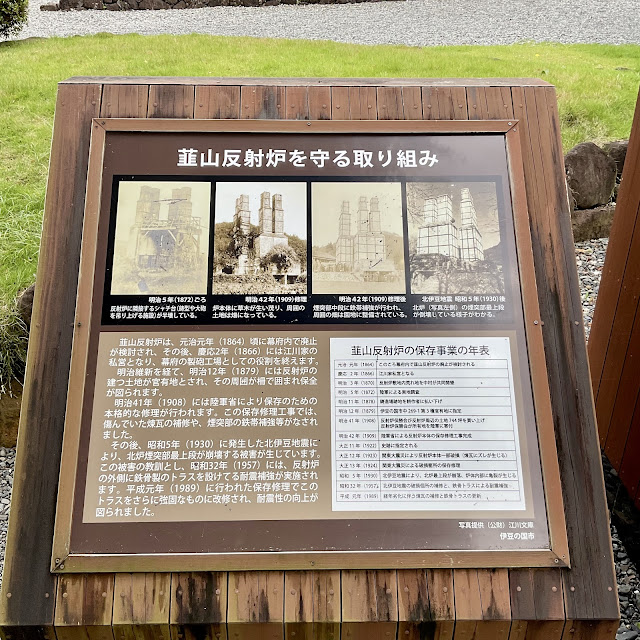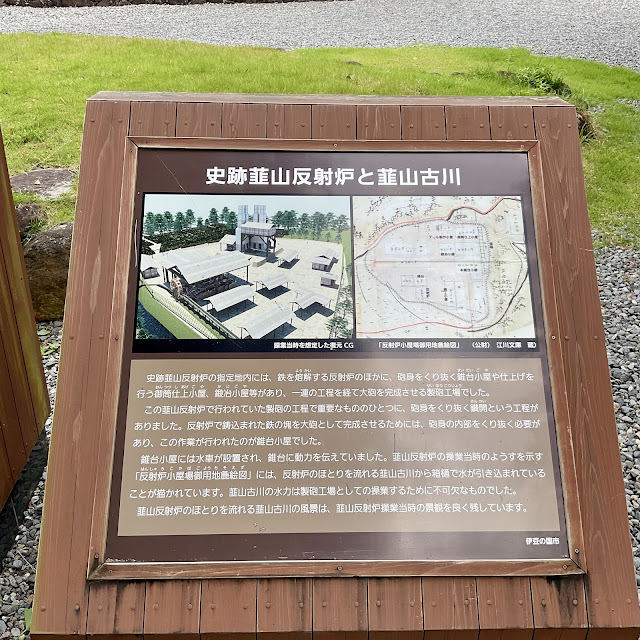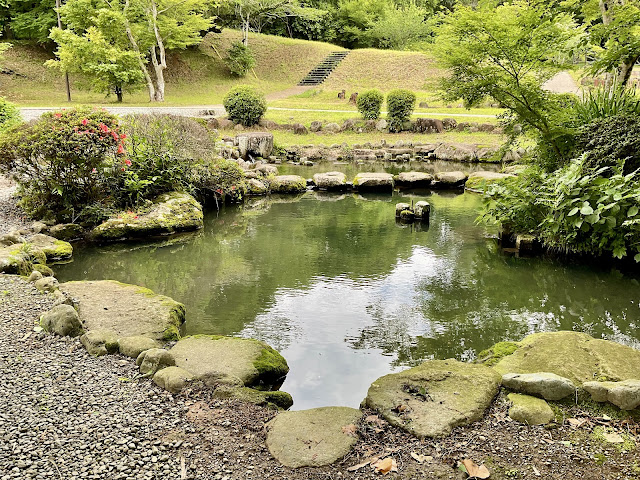Nirayama Reverberatory Furnaces
I first heard of this place years ago when one of my students visited with his family and he told me about it. I mistakenly thought it would be difficult to get to without a car. It is less than a 30 minute walk from the Izunagaoka Station. (A reverberatory furnace is a metallurgical process furnace that isolates the material being processed from contact with the fuel, but not from contact with combustion gases.)
This is information from b-izu.com :
A designated national historical site. It was also designated a heritage of industrial modernization by the Ministry of Trade and Industry. At the end of the Edo period, to protect Japan (Edo) from European and American colonization and the country from being opened, Nirayama prefectural governor Egawa Tarozaemon Hidetatsu advised the shogunate to create the cannon-casting furnace.
The construction started in 1854, and was completed in 1857. It was used to cast hundreds of big and small cannons including for the forts (gun batteries) in the waters near Shinagawa, until usage of the furnace ended in 1864. The name “reverberatory furnace” comes from the structure of the furnace. Heat is reflected (or “reverberated”) off the arched ceiling, producing the melting temperature of iron (1700 degrees or 3092 degrees Fahrenheit).
There are 11 reverberatory furnaces in Japan which were constructed for cannon casting, but currently only 3 remain (Satsuma Kyu Shuuseikan reverberatory furnace, the Hagi reverberatory furnace, and the Nirayama reverberatory furnace). The Nirayama reverberatory furnace is of great importance because it is the best preserved, and has been confirmed to have actually been used.
At the guidance center, you can learn about pig iron and tools which were used when the furnace was in operation. You can also watch footage about the Nirayama reverberatory furnace on a big screen.
*In September 2013 the Nirayama reverberatory furnace was among the sites recommended domestically as “sites of Japan's Meiji industrial revolution: Kyushu-Yamaguchi and related areas”.
*In July 2015, the Nirayama reverberatory furnace was one of the constituent assets of the “sites of Japan's Meiji industrial revolution: Kyushu-Yamaguchi and related areas” registered as a UNESCO World Heritage Site.
If you come by car, there is a large parking lot. I bought a dual ticket for both the Egawa Residence and the furnace site for 900 yen. It might be 500 yen for this place alone. It opens at 9:00 am, but you can walk around and look at signs if you arrive early.
Originally there were no bars on the furnaces. They were added later to protect the structures from earthquake damage.
Inside the visitor’s center are various displays and a movie.
After leaving the building, you can go outside to see the furnaces up close.
The surrounding area is set up like a park, with information and places to sit.
With the help of Google Maps, I found my way to various other places on my way to the Egawa Residence and the Nirayama Castle site. Stay tuned for the rest of my day-long visit.
































2 comments:
This place looks more interesting than I first thought. I have seen pictures of the chimneys before, but believed they had something to do with a porcelain kiln. Their shape made me think of the four-corned chimneys I saw in Arita many years ago.
I love Japan for taking such good care of historic sights. I know many of these reverberatory furnaces have disappeared, but what remains is preserved and made accessible to the general public.
I never thought about Japan having its own Industrial Revolution. I love learning things like this!
Post a Comment